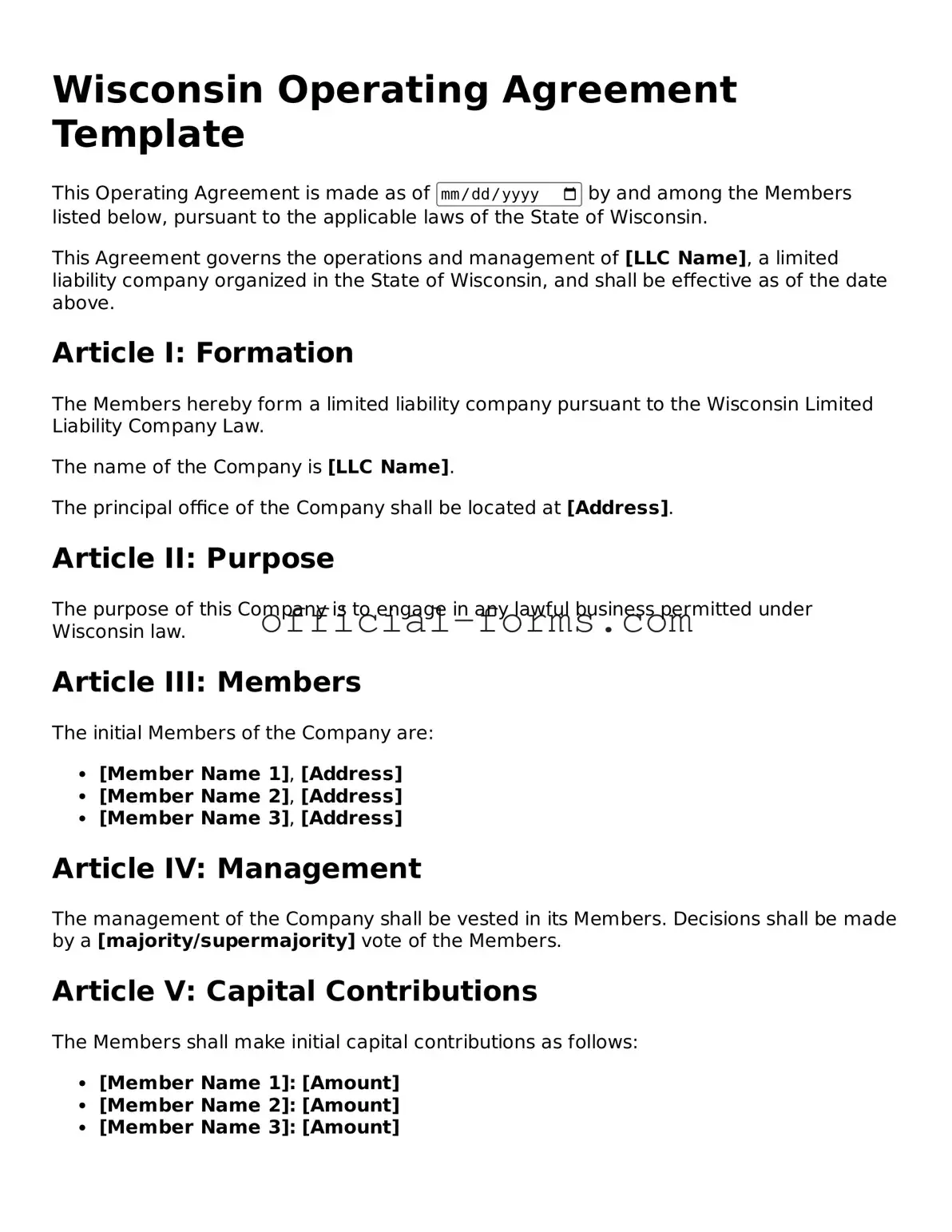Official Wisconsin Operating Agreement Document
The Wisconsin Operating Agreement form is a legal document that outlines the management structure and operational procedures of a limited liability company (LLC) in Wisconsin. This form serves as a foundational agreement among members, detailing their rights, responsibilities, and the distribution of profits and losses. Understanding this document is crucial for anyone looking to establish or manage an LLC in the state.
Open My Operating Agreement Now
